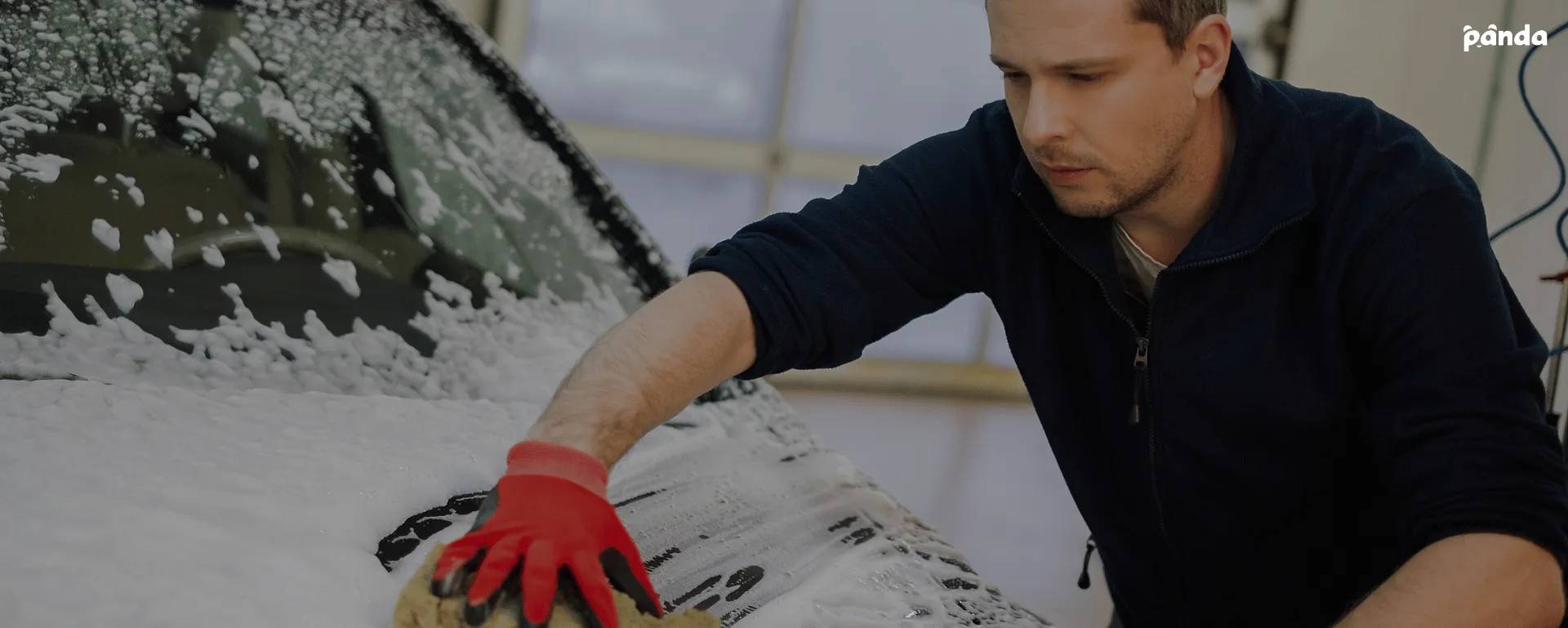How to Fix Keyed Car: Best Ways to Repair Minor Car Scratches
Dealing with unsightly keyed car scratches? No worries! Our step-by-step guide will help you restore your car’s look & fix those annoying scratches in no time!

Written by:
Parham Koukia
Reviewed By:
Editorial Team
Published: April 16, 2025
Updated: September 22, 2025
Use AI to summarize this article:
Keyed car damage is one of the most common and disheartening types of vandalism, and whether it's a light graze or a deep gouge into the paint, addressing it quickly can help you avoid costlier repairs down the road.
In this guide, we’ll walk you through everything you need to know about fixing keyed car scratches, from identifying paint layer damage to deciding between DIY solutions and professional help.
What Does Keyed Car Damage Look Like?
A keyed car often has a long, narrow scratch, typically running horizontally along a panel. Depending on how much pressure was applied and the tool used, the scratch might cut through just the clear coat or reach down to the metal body.
Common Signs of Keying:
- A straight or curved scratch across the door or rear panel
- Sharp, defined edges around the scratch line
- No signs of impact (unlike a dent or scrape from another car)
Identifying the Depth of the Scratch
Every car paint job consists of three main layers: the clear coat, the base coat (color), and the primer. The depth of the scratch determines the right repair method.

1. Clear Coat Scratches
These are surface-level abrasions. The color underneath remains untouched.
- Appearance: Slightly dull line visible at certain angles
- Repair: Buffing and polishing with scratch remover
2. Base Coat Scratches
These go beyond the clear coat and expose the color layer.
- Appearance: Noticeable color disruption
- Repair: Requires touch-up paint and careful blending
3. Primer or Metal Exposure
These are deep scratches exposing the primer or metal.
- Appearance: Visible gray (primer) or silver (bare metal)
- Repair: Sanding, primer application, paint layering, and sea
Someone Keyed My Car, What Should I Do?
According to a survey by ValuePenguin, 9% of American car owners have had their car keyed in a parking lot. And now you know that you are not the only victim and how common this frustrating act of vandalism can be. Here's how to repair keyed car scratches at home:
Tools and Materials You’ll Need
To repair keyed car scratches, make sure you have all the necessary equipment. These include:
- Mild car wash soap and microfiber towels
- 1500-2000 grit sandpaper
- Automotive primer
- Touch-up paint (OEM-matched)
- Rubbing compound and polishing compound
- Clear coat
- Wax
Step 1: Clean The Area
Wash the scratched panel using car wash soap and warm water. Remove any dirt, wax, or debris. Dry thoroughly with a microfiber cloth.
Step 2: Sand Lightly (For Deep Scratches)
If the scratch penetrates past the clear coat, gently sand the area using 1500-grit wet sandpaper. Use a light, circular motion to smooth out rough edges.
Sanding helps smooth out the surface and get rid of any imperfections. Make sure to rinse the affected area frequently to prevent sandpaper from clogging.
Step 3: Apply Primer (For Primer-Level Damage)
Once sanded, apply automotive primer using a fine brush or toothpick if bare metal is exposed. Allow it to cure fully before painting.
Step 4: Touch-Up Paint
Apply thin layers of OEM-matched touch-up paint. Let each layer dry before applying the next. Avoid thick coats to prevent an uneven texture.
Take your time! Multiple thin layers work better than one thick coat as they give a smooth and better finish.
Step 5: Clear Coat and Buffing
After the paint dries, apply a clear coat over the repaired area. Let it cure completely. Then, buff with rubbing compound to blend the area, followed by polish to restore shine.
Tip: Check the instructions of the product for the drying time and proper application.
Step 6: Waxing
Finish with a coat of high-quality car wax to protect the repair and match the gloss level of the surrounding panel.
Waxing adds an extra layer of protection against future scratches!
When to Seek Professional Detailing Services
If the scratch is extensive, affects multiple panels, or you're unsure of your skill level, professional detailing is the best option for you.
Professional detailers have experience, expertise and use advanced paint-matching, sanding tools, and finishing compounds that blends seamlessly and are unnoticeable.
Keyed Car Repair Cost: DIY vs. Professional
Repairing minor scratches at home can cost between $50-$150, whereas the professional detailing might cost anywhere between $250-$700, depending on the severity of the damage and the vendor you choose.
The cost of repairing a keyed car with professionals can be more expensive, but they often provide guaranteed results and save you time.
DIY solutions, on the other hand, are more affordable but may require more effort and time.
Additionally, DIY methods can be risky sometimes, as even a slight mistake can damage your car’s exterior and result in higher repair costs.
Do Insurance Cover Keyed Car Repairs?
In many cases, yes. Keyed car damage is often classified as vandalism and may be covered under comprehensive insurance. However, here are some considerations:
- Check your policy for vandalism coverage
- Weigh the repair cost against your deductible
- Filing a claim may affect future premiums
For minor scratches or damage, out-of-pocket repairs may be more economical.
Tips to Prevent Your Car from Being Keyed
- Park in well-lit, busy areas
- Use car covers in public parking
- Install a visible dash cam or surveillance camera
- Apply protective film or ceramic coating for extra protection
Frequently Asked Questions
1. What does it mean if my car got keyed?
Getting your car keyed means someone deliberately scratched your car with a key or sharp object. This act of vandalism is considered a criminal offence in most jurisdictions.
2. How long does it take to fix a keyed car?
While DIY repairs can take a few hours to a day, professional services may complete repairs in one day, depending on the damage severity.
3. What’s the difference between a scratched and a keyed car?
A scratch can be caused accidentally (e.g., by tree branches), while a keyed car involves the deliberate intention of scratching with deeper, more aggressive marks.
4. Does a keyed car lower resale value?
Yes. Visible scratches and body damage can reduce a vehicle's trade-in or resale value by hundreds of dollars, especially if the damage remains unrepaired.
Deciding how to fix a keyed car scratch depends on the severity of the damage and your confidence in DIY fixes. If the scratch is minor, rolling up your sleeves and following the steps in this guide can get your car back in great shape. However, when the damage runs deeper, getting an exterior car detailing service might be the better choice to ensure flawless results.
Quick reminder if your car got keyed recently: Don’t wait until rust forms or the scratch spreads!

Parham Koukia
Lead Car Detailer / Operations Manager
With nearly 15 years of hands-on detailing experience, Parham has become a trusted authority in the auto care world. His work is regularly spotlighted in leading outlets like CNN, GoBankingRates, and Family Handyman. Parham likes to share his knowledge to offer in-depth tips on equipment selections, seasonal car care, and some secret car cleaning tips used by detailers in the real world!
Read more
